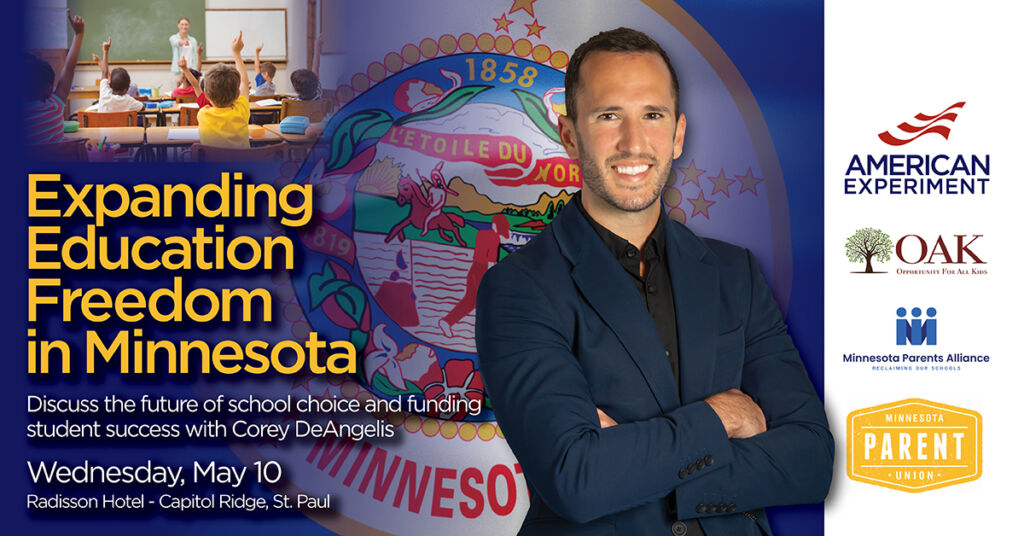40 years after ‘A Nation at Risk’: Mediocrity remains
In 1983, a report by the United States National Commission on Excellence in Education sounded the alarm on the many failures in American education. Following the release of the report, titled “A Nation at Risk,” decades of educational reform efforts at the federal and state levels have attempted to quell the rising tide of mediocrity — from Pres. George W. Bush’s “No Child Left Behind Act” (2002) and Pres. Barack Obama’s “Race to the Top” program (2009), which are still enshrined in federal law today, to state reforms on school accountability and standards.
But certain challenges facing American education in 2023 are still just as real as they were 40 years ago. So, what does this mean for American education? Morgan Polikoff at the University of Southern California shares three lessons that can be learned “by examining what has taken place since the release of the report.”
“Education reform has improved outcomes, but progress has slowed or reversed in the past decade”
Polikoff notes that students from all racial, ethnic, and socioeconomic groups have made achievement gains since the 1970s. The high school dropout rate has also decreased, from around 14 percent when “A Nation at Risk” was released to about 6 percent now.
But too many students continue to not master grade-level material. Based on pre-COVID student performance on the National Assessment of Educational Progress, and post-COVID assessment results that show two decades of math and reading progress have been erased, low levels of academic achievement and achievement gaps remain.
“The reforms did not address the root causes of the problems”
Polikoff identifies certain outside factors that impact educational performance — poverty, access to quality early childhood education — but there is another to add to the list that isn’t often mentioned: the impact of fatherless homes.
According to Centers for Disease Control and Prevention (CDC) data shared by TakeCharge, children from fatherless homes account for 71 percent of high school dropouts, 85 percent of children who exhibit behavioral disorders, and 90 percent of all homeless and runaways. “We know the downstream consequences of fatherless homes,” writes TakeCharge. “An army of DEI [Diversity, Equity, Inclusion] agents Critical Race Theory enthusiasts, and identity politicians will not change the current state of affairs.”
“The political coalitions that brought reform have fallen apart”
Bipartisan efforts that brought about the education reform initiatives following “A Nation at Risk” are no more, states Polikoff.
From “A Nation at Risk” through even much of the Obama administration, many aspects of the education reform agenda had bipartisan agreement. Governors of both parties came together to enact standards and testing reforms that set expectations for student learning and measured student progress against those expectations in the 1980s and 1990s. Congress voted overwhelmingly for the No Child Left Behind Act in 2001, calling for more rigorous standards and more frequent testing to drive educational improvement.
And some versions of school choice — especially charter schools — were supported by Republican and Democratic administrations in Washington and nationwide. Even the now-controversial Common Core standards, which aimed to create consistent expectations for student learning in math and English nationwide, were originally bipartisan. That is, they were created and endorsed by leaders from both parties.
This broad reform coalition is no more.
Now, approaches to education reform are “splintering into red state and blue state versions,” continues Polikoff.
But I disagree with his seemingly negative view of the role of school choice expansion in all of this, which he writes “continue[s] to drive down public school enrollment in states across the nation.” If families are leaving a school, it is likely because that school isn’t providing what that family needs, or wants, for their children’s education — a quality education, a safe learning environment, etc. As Polikoff concludes, “Schools alone won’t solve the nation’s educational problems.” But they can make those educational problems worse if a student isn’t in a learning environment that best meets his or her needs.
This is why empowering parents to have control over their children’s education is so important. As Kerry McDonald with the Foundation for Economic Education has written, “[A] diverse and decentralized education system, driven by entrepreneurial parents and educators and defined by choice, leads to better quality learning and a more harmonious society.”
More families have access to school choice now compared to the many families who didn’t have such an opportunity during the decades following “A Nation at Risk.” As we continue working to address mediocrity, decentralizing education and allowing families to access the educational option that suits them best — spanning the gamut of educational philosophies and personal worldviews — must be a central part of those efforts.
_______________________
Join us on May 10 to learn more about expanding education freedom in Minnesota from national school choice expert Corey DeAngelis. Suspicious of what school choice expansion would mean for you and your family? Corey will address that too! Learn more and register here.
